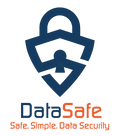Cyberattacks don’t take holidays. They evolve, adapt, and thrive—especially when we’re not paying attention. If 2024 taught us anything, it’s that hackers are creative. So, as we step into 2025, let’s talk about how you might get hacked this year, using lessons from last year to prepare for what’s coming next.
1. Phishing 2.0: AI Gets Crafty
Gone are the days of poorly worded emails from a “Nigerian prince.” In 2024, hackers embraced AI to craft hyper-realistic phishing emails and even used deepfake voice technology to impersonate executives. Expect even more convincing scams in 2025. Pro tip: If your CEO emails you asking for $10,000 in Amazon gift cards, it’s probably not them.
How to Stay Safe: Advanced email filtering and training can help, and yes, you should probably stop clicking on suspicious links.
2. Ransomware: Still the King of Chaos
In 2024, ransomware shut down hospitals, disrupted schools, and generally made life miserable. Ransomware-as-a-service (yes, it’s a thing) made it easier for wannabe criminals to join the fun. In 2025, expect more attacks targeting small businesses that can’t afford a proper defense.
How to Stay Safe: Regular backups are your best friend and please don’t open any shady attachments.
3. Supply Chain Attacks: Because You’re Only as Secure as Your Vendors
Remember the Salt Typhoon Breach from back in October? Hackers didn’t attack their big targets directly—they infiltrated through a third-party vendor. It’s like sneaking into a VIP party through the caterer’s entrance.
How to Stay Safe: Vet your vendors and enforce strict access controls. No shortcuts.
4. Outdated Software: A Hacker’s Playground
Ivanti VPN vulnerabilities? Yeah, those were a thing in 2024, exploited because people skipped updates. Running outdated software in 2025 is like leaving your front door wide open with a neon “Welcome, Hackers!” sign.
How to Stay Safe: Update. Your. Systems.
5. IoT Devices: Smart, but Not Secure
IoT devices in manufacturing got hammered in 2024, and smart home devices weren’t far behind. In 2025, hackers will likely expand to wearables and other “smart” gadgets. Spoiler: They’re not that smart.
How to Stay Safe: Network segmentation and better IoT security. Don’t let your fridge or your watch become a hacker’s access point.
6. Social Engineering: Hackers Know You Better Than You Know Yourself
People are predictable, and hackers know it. In 2024, social engineering attacks—convincing employees to hand over sensitive info—were everywhere. Expect even slicker scams in 2025, likely with AI-generated personas.
How to Stay Safe: Train employees to be less gullible. Seriously.
7. Insider Threats: Malicious or Just Clueless
Whether intentional or accidental, insiders caused plenty of chaos last year. With economic uncertainty lingering, expect more insider incidents in 2025.
How to Stay Safe: Monitor user behavior and always enforce access controls.
8. Public Wi-Fi: Free Isn’t Always Good
Hackers exploited public Wi-Fi like it was their full-time job in 2024. If you’re still logging into sensitive accounts at coffee shops, you might as well just hand over your passwords.
How to Stay Safe: Use a VPN. Always.
9. AI-Powered Malware: Smarter and Scarier
AI isn’t just for writing blogs—it’s also for creating adaptive malware. In 2024, we saw the rise of malware that evolves to bypass defenses. Expect more of this in 2025.
How to Stay Safe: Invest in AI-driven defenses. Fight fire with fire.
10. Unpatched Systems: Because Nobody Likes Updates
Unpatched systems led to major breaches last year. Hackers will continue to exploit these gaps in 2025 because, let’s be honest, some people never learn.
How to Stay Safe: Schedule updates and stick to them.
Stay Ahead of the Hackers with Data Safe
Hackers aren’t going anywhere, but you can make their lives harder. From phishing scams to AI malware, the threats are real. The good news? At Data Safe, we specialize in keeping you ahead of the game. Don’t wait to become the next cautionary tale—reach out today and let’s secure your systems for 2025 and beyond.

